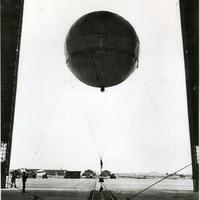
Apr 25, 2019
This week we’re going back to a favorite episode from 2015.
During World War II, something happened that nobody ever talks about. This is a tale of mysterious balloons, cowboy sheriffs, and young children caught up in the winds of war. And silence, the terror of silence.
Reporters Peter Lang-Stanton and Nick Farago tell us the story of a seemingly ridiculous, almost whimsical series of attacks on the US between November of 1944 and May of 1945. With the help of writer Ross Coen, geologist Elisa Bergslien, and professor Mike Sweeney, we uncover a national secret that led to tragedy in a sleepy logging town in south central Oregon.
Special thanks to Annie Patzke, Leda and Wayne Hunter, and Ilana Sol. Special thanks also for the use of their music to Jeff Taylor, David Wingo for the use of "Opening" and "Doghouse" - from the Take Shelter soundtrack, Justin Walter's "Mind Shapes" from his album Lullabies and Nightmares, and Michael Manning for the use of "Save".
Support Radiolab today at Radiolab.org/donate.